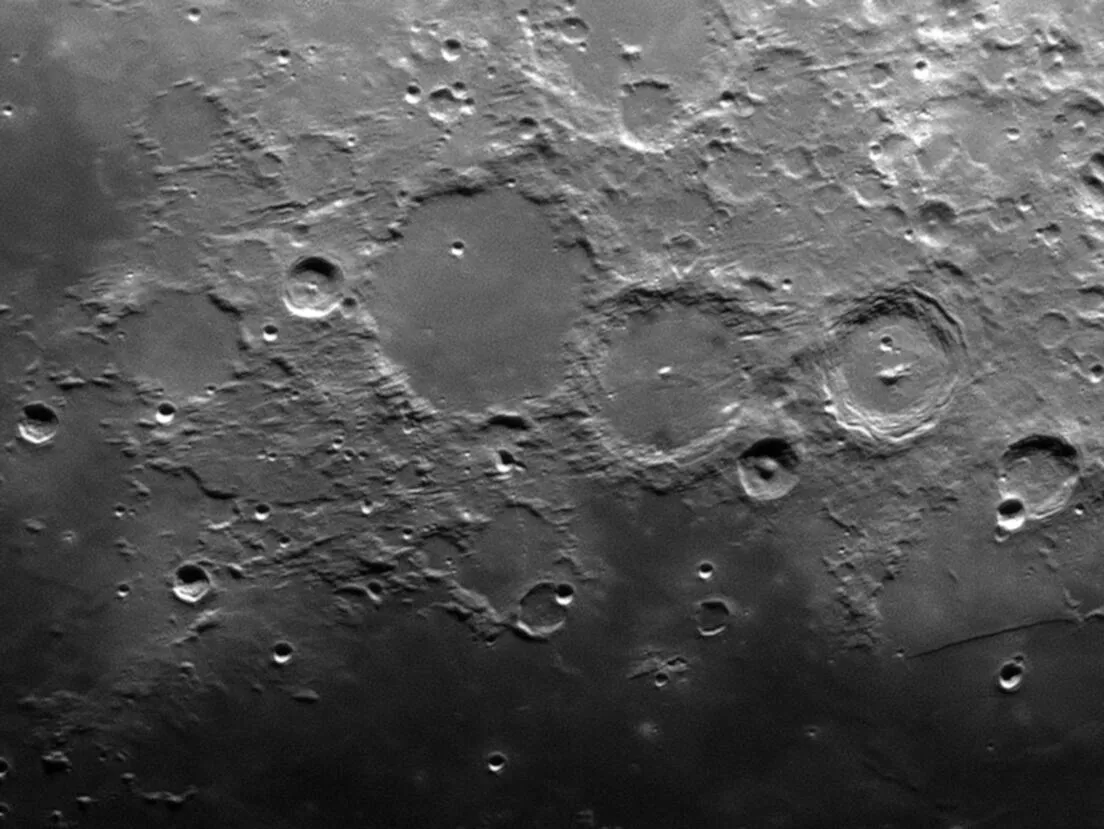Ptolemaeus is one of the most famous lunar craters. It’s named after Claudius Ptolemaeus (Ptolemy), who lived from about 120 AD to 180 AD and was the last and arguably the greatest of the Greek astronomers of antiquity.
The crater was named by Giovanni Riccioli in 1651; it is seen on all the early maps and was drawn in detail by Wilhelm Beer and Johann Heinrich von Mädler in 1838.
For more info on lunar observing, read our guides on how to observe the Moon and the best features on the Moon.

Facts about Ptolemaeus crater
- Size: 153km
- Age: Less than 3.92 billion years
- Location: Latitude 9.2°S, longitude 1.8°W
- Recommended observing equipment:4-inch telescope
Ptolemaeus lies not far from the centre of the Moon’s disc and can therefore be seen for much of each lunation, particularly a few days either side of first and last quarter Moon.
Its large size and grey floor make it easy to find, though it is not easy to spot under very high illumination.
The shape of the crater is more or less circular, but the rampart is low and irregular; the highest peak, in the northwestern rim, rises to an altitude of 2.9km.
The floor is flooded with lava; there is no central peak and Ptolemaeus is clearly ancient, dating back to the time of the Great Bombardment.

Formations of this kind are often called ‘walled plains’. The only major feature on the floor is the low-rimmed, bowl-shaped, 9km crater Ammonius (formerly known as Ptolemaeus A), which lies about 10km northeast of the centre of Ptolemaeus and is easy to see with any telescope. It is almost 2km deep.
Under low illumination Ptolemaeus is magnificent, with the peaks of the rim casting shadows.
When the Sun is high, small craterlets can be seen, and there are several ‘ghost craters’ – old formations that have been overwhelmed by lava that are now barely traceable.
One of these ghosts, Ptolemaeus B, is 17km across and lies just north of Ammonius.
The Ptolemaeus crater chain

Ptolemaeus is the northern member of a chain of three large formations.
The central member, Alphonsus, has a low central peak and a system of rilles on its floor.
The southern member, Arzachel, has higher walls and is more regular, with a prominent central peak.
Arzachel is the smallest of the trio and is presumably the youngest.
Transient lunar phenomena have been reported in Alphonsus, but not in Ptolemaeus or Arzachel.

Despite its smooth floor and its low walls, Ptolemaeus isn’t the best choice for an early manned lunar base. It’s close to the equator and here the extreme temperature variations are far from ideal.
Yet in the future there seems no reason why a base should not be established there.
It’s interesting to note that from a base near the centre of the crater you would be unable to see even the loftiest peaks of the outer wall.
They would be well below your horizon. But from there, our own world will be high in the sky and will look truly splendid.

Next time the sky is clear and the chain of craters, including Ptolemaeus, is sunlit, it is well worth seeking out these great walled plains.
Binoculars will show them clearly when the floors are partly shadowed, and with any telescope you will be able to locate them even when the Sun is high over them and there is little or no shadow.
Certainly Ptolemaeus, with its broken walls, smooth floor and inner ghosts, is one of the most intriguing of all the craters on the Moon.

